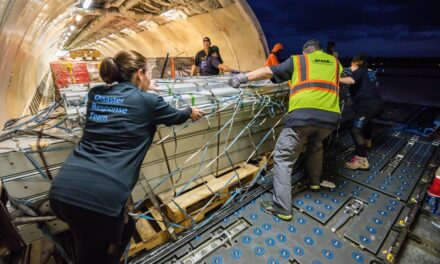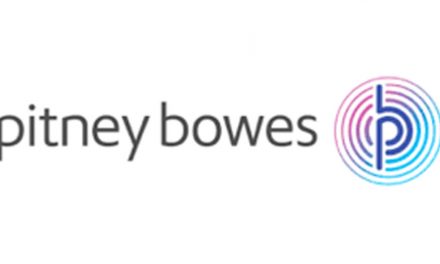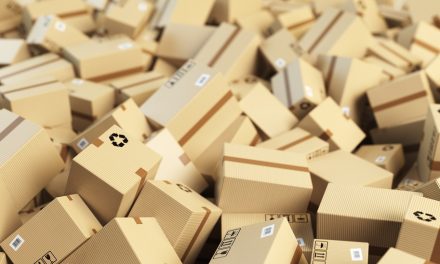
Solving the last mile lottery
Dr Udo Neisel Global Presales and Solutions Delivery Manager, Pitney Bowes, looks at how disruption is driving innovation in the delivery industry. Dr Udo Neisel Global Presales and Solutions Delivery Manager, Pitney Bowes, looks at how disruption is driving innovation in the delivery industry.
The change in structure of deliveries is one of the biggest disruptors ever to hit the postal industry. The Pitney Bowes Shipping Index1 calculated that in 2015, 31 billion parcels were shipped. It forecasts parcel shipping volume to grow annually at 5% to 7% for a total increase of 20% percent by 2018, fuelled by the growth in ecommerce. The U.S. remains the largest market for parcel shipping from the countries studied, with more than 11.8 billion parcels shipped in 2015. Other countries featured in the top five are Japan, Germany, UK and France with parcel volumes of 9.4 billion, 3 billion, 2.2 billion and 1.5 billion units respectively in 2015. This disruption is driving innovation as businesses transform themselves to make the most of the vast opportunities it generates.
One particular area which is transforming to maximise opportunities presented by this explosion in parcel volume is sortation. Firms are managing the challenges presented by the increase with innovative, automated parcel sorting technologies. These physical and digital technologies automate manual tasks and integrate into workflows across an organisation, improving productivity and driving efficiency. Crucially, they provide a strong foundation on which a business can build its shipping strategy.
Shipping has become a differentiator
There’s another key area impacted by the boom in parcel volume: the last mile. This final part of a parcel’s journey reaches or exceeds 50% of the total parcel delivery cost2. And with 66% of consumers shopping cross border3, the business of moving parcels from one place to another is becoming increasingly complex. The last mile has become, in itself, a disruptive force on the industry, driving change and fueling innovation as carriers across the globe invest in capabilities, both organically and through mergers and acquisitions, to help them get this right and meet ever-increasing consumer expectations. These capabilities can be operational, such as integrating cloud-based shipping platforms; infrastructure- based, such as an extended network of delivery hubs and on-the-ground local support; and customer-experience-focused such as customer engagement software.
When it comes to customer experience, shipping is a differentiator. Consumer expectation is placing pressure on businesses and is driving change in logistics and shipping management. Clothing firm Next was one of the first to offer next day delivery until midnight for a standard, reasonable cost, and a four-hour delivery window. Same-day delivery is also increasingly popular, now offered by companies such as Amazon. And according to a study from the Fraunhofer Institute of Material Flow and Logistics4 (IML), ‘the trend is towards same-hour delivery’. Again, Amazon is first out of the blocks here having patented anticipatory shipping in which it forecasts requirements based on previous buyer behaviour, so it can ship a product to a central hub before a consumer has even ordered it. If you’ve purchased the previous four Games of Thrones DVDs as soon as they were released, for example, Amazon might forecast that you are highly likely to purchase the next series so will send it to a central hub awaiting your order.
Last mile pressure from new breed of grocery firms
Adding further pressure to last mile management are grocery firms. More and more small independent grocery delivery companies are emerging. Graze, Hello Fresh, Gousto, Abel and Cole and Marley Spoon deliver fresh ingredients as the ‘box scheme’ generates widespread appeal, particularly for time-poor consumers looking for convenience, quality and simplicity. With perishable goods, there is no room for delivery error. But these independent grocers can’t afford to absorb vast additional last-mile costs, and consumers don’t want to pay – they expect value. Equally, consumers located in rural areas don’t want to be persecuted by paying extra charges purely based on location, so offering cheaper deliveries in city centres isn’t going to be popular.
The environmental impact of the last mile is also coming under the spotlight, with van emissions a concern especially for repeated journeys if consumers are out at the time of delivery. Restrictions on deliveries to limit congestion add to the pressure and require creative solutions.
Emerging technologies to solve the last mile issue
How can firms address the challenges presented by that last mile to a consumer’s door? Technology has a significant part to play here. Businesses are exploring new technologies to help them improve accuracy, enhance efficiencies, better manage and ultimately solve the last mile challenge. Cloud-based multi-carrier office shipping platforms such as Commerce Cloud increase choice for businesses, with access to a diversity of different carriers through APIs. Innovative transport solutions are another potential solution to the last mile challenge: at the last European Post Expo event, visitors were treated to a host of electric vehicles, low emission smart cars and scooters which are used by forward-thinking posts around the world as clean logistics solutions become key.
Autonomous vehicles will become commonplace
Autonomous ground vehicles are another solution to the challenges of the last mile, and many are currently being prototyped and tested: McKinsey in ‘The Future of the Last Mile’ estimate that autonomous vehicles will deliver 80% of parcels, and would be cost-effective particularly in rural areas. DPD recently published a paper which states that self-driving vehicles could, in the future “make it possible to deliver at least part of the company’s parcel volumes with an unprecedented degree of flexibility”. And the report cited earlier from the Fraunhofer Institute of Material Flow and Logistics (IML) predicts that ground-based delivery robots will be common in cities and rural areas by 2030.
Storing the goods in a convenient hub is also key to last mile management, and carriers are investing here: UPS, for example, is investing $400m in a package sorting office in Atlanta, whilst Hermes is extending its estate with new industrial sites. Businesses are also looking at solutions such as parcel lockers becoming a convenient way for consumers to send, collect and return items. A study in Poland – ‘Analysis of parcel lockers’ efficiency as the last mile delivery solution’5 – cites reception boxes, delivery boxes, controlled access systems, collection points and locker banks as presenting potential solutions to ‘last mile’ issue. Each has different benefits, but the removal of multiple drops and economies of scale make these viable alternatives to direct home deliveries. The report quotes analysis carried out by researchers from the AGH University of Science and Technology in Krakow (Poland) which revealed that the courier servicing InPost parcel lockers can ‘deliver 600 parcels in just one day, with travel distance of about 70 km’ compared to 60 parcels and 150 km in a traditional delivery system.
Mobile parcel lockers – or Autonomous Ground Vehicles with integrated lockers – are another option being explored, and crowdsourcing – in which drivers sign up to be allocated delivery drops, and choose delivery orders – is a cost-effective and environmentally-responsible solution to the last mile challenge, perhaps with taxi drivers already en route to a passenger collection, say McKinsey.
Think globally, act locally
As the increase in parcel volume shows no sign of slowing down, businesses need to think globally and act locally when it comes to addressing the challenge of the last mile. Technologies, applications, tools and platforms which remove complexity, collate precise analytics and generate insight will be key to solving the challenge, gaining a competitive advantage and delivering a world-class customer experience.
1 The Pitney Bowes Shipping Index is based on 12 major markets, including the U.S., Canada, Brazil, Germany, UK, France, Italy, Norway, Sweden, Japan, Australia and India, parcel shipping grew 2.9 percent to 31 billion in 2015
2 The Future of the Last Mile by McKinsey
3 The 2016 Pitney Bowes Global Online Shopping Study
4 Study from the Fraunhofer Institute of Material Flow and Logistics cited in English here and in German here
5 Report from Sciencedirect.com.











